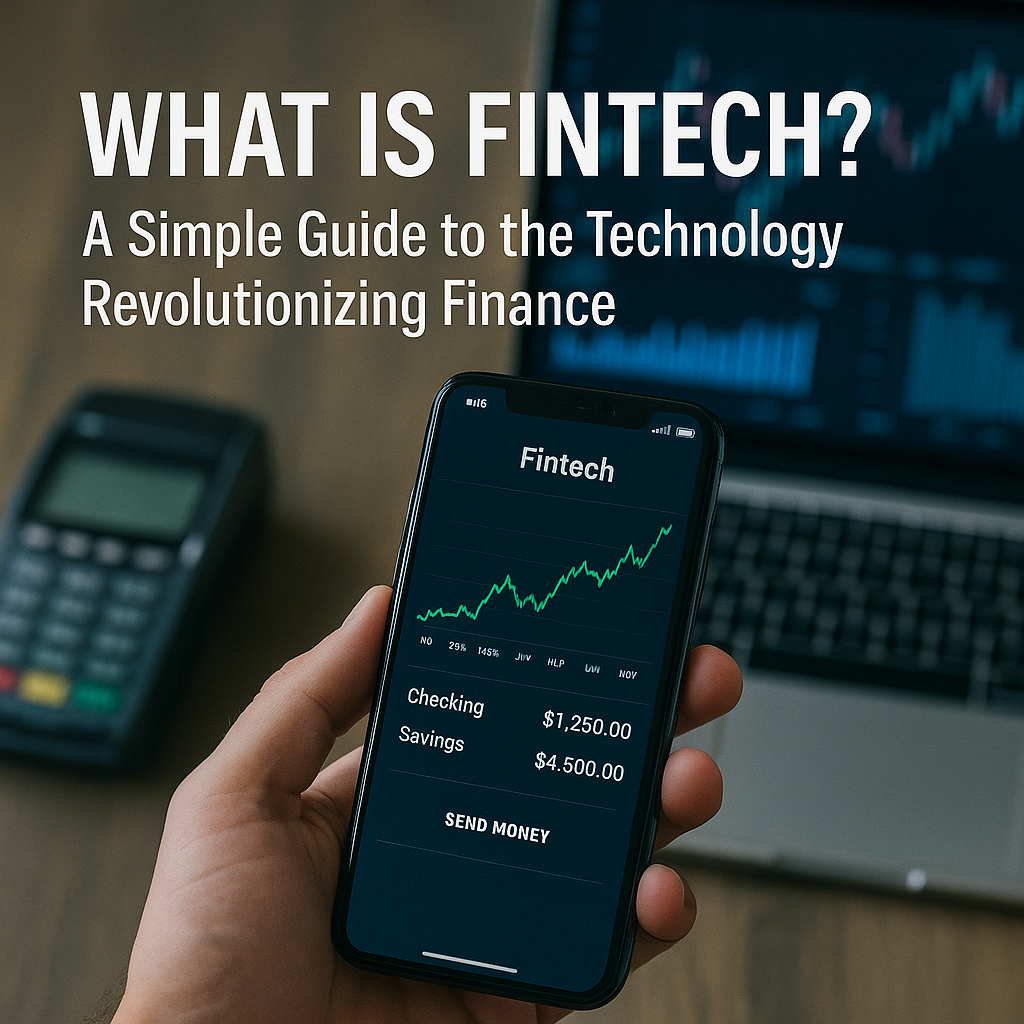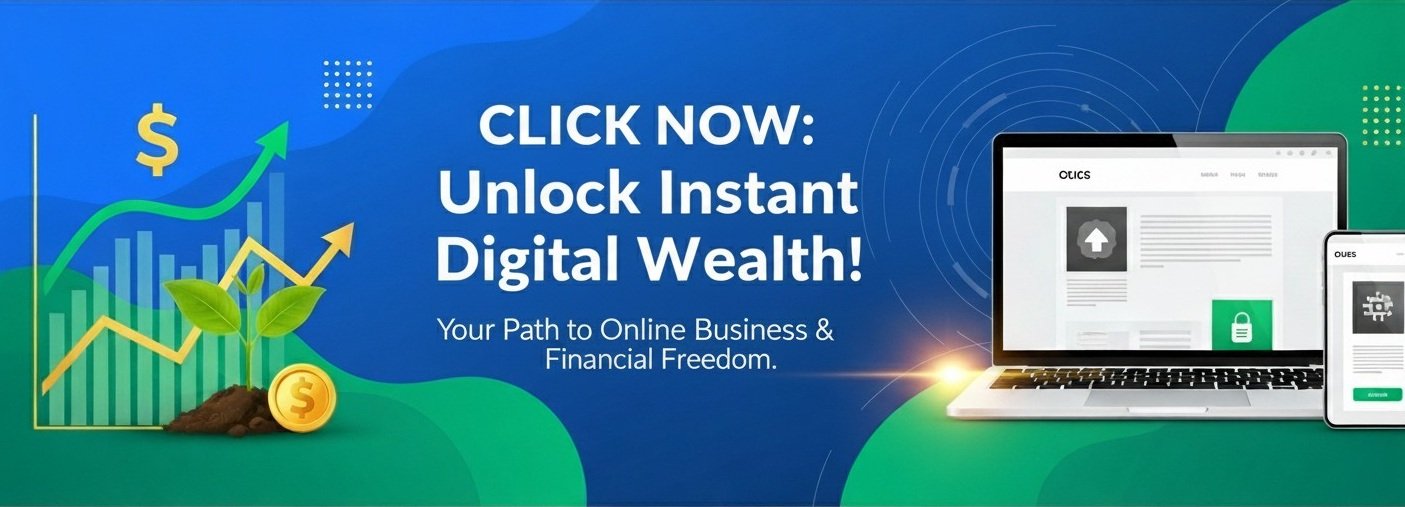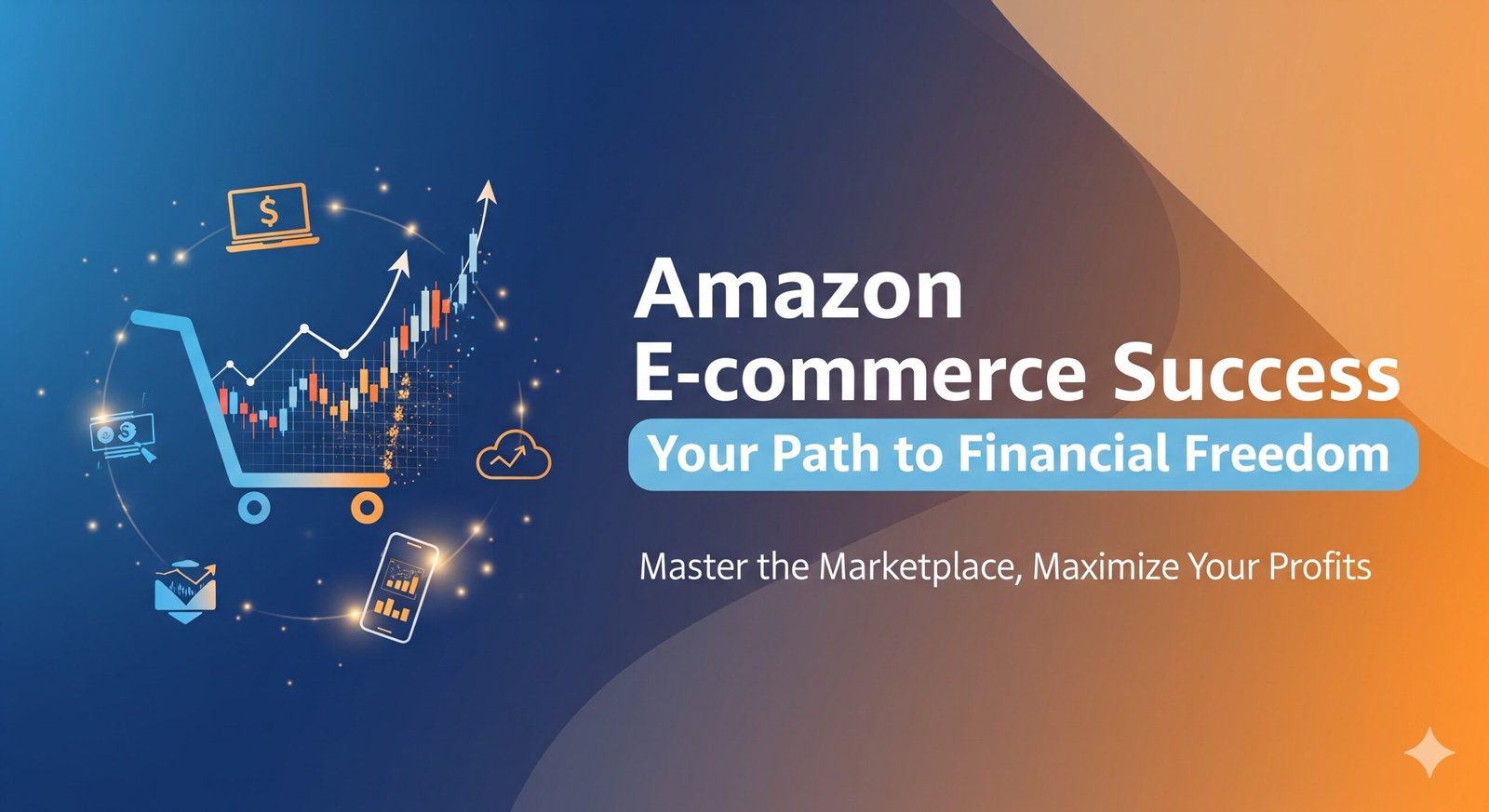The world of finance, once characterized by brick-and-mortar banks, complex paperwork, and traditional intermediaries, is undergoing a rapid and irreversible transformation. At the heart of this metamorphosis lies “Fintech,” a portmanteau of “financial technology.” More than just a buzzword, Fintech represents the cutting edge of innovation, leveraging technology to make financial services more efficient, accessible, and user-friendly. From the way we pay for coffee to how we manage our investments and borrow money, Fintech is reshaping every aspect of our economic lives, democratizing access to financial tools and challenging established norms.
This essay aims to provide a comprehensive yet simple guide to understanding Fintech. We will delve into its core definition, explore its key pillars and the technologies that drive it, and examine its pervasive impact across various sectors of the financial industry, including banking, investing, lending, and insurance. Furthermore, we will highlight the significant benefits that Fintech offers to consumers and businesses alike, alongside the inherent challenges and risks that accompany its rapid ascent. Finally, we will cast our gaze toward the future, contemplating the ongoing evolution of financial technology and its potential to further redefine the global financial landscape. For anyone seeking to navigate the modern financial world, grasping the essence of Fintech is no longer optional; it is essential.
Defining Fintech: Technology Meets Finance
At its most fundamental level, Fintech refers to any technological innovation that aims to improve and automate the delivery and use of financial services. It encompasses a vast and ever-expanding range of technologies, applications, and business models that disrupt, enhance, or enable traditional financial services.
A Broad Spectrum of Innovation
Fintech is not a single technology but a broad category that includes everything from the simple act of paying with your smartphone to complex algorithmic trading systems and blockchain-based decentralized finance. Its primary goal is to simplify and streamline financial processes that were once cumbersome, expensive, or inaccessible.
Consider the evolution:
- Early Fintech (pre-2000s): Focused primarily on back-office operations for financial institutions, such as mainframe computers processing transactions or electronic data interchange (EDI) for interbank transfers.
- Modern Fintech (2000s-present): Shifted towards consumer-facing applications and disruptive models, driven by the internet, mobile technology, big data, and cloud computing. This is where the term “Fintech” truly gained prominence.
The overarching aim is to make financial services faster, cheaper, more convenient, and more accessible, often by bypassing traditional intermediaries or leveraging data in new ways.
The Core Objectives of Fintech
Fintech innovations are typically driven by several core objectives:
- Efficiency: Automating manual processes, reducing paperwork, and speeding up transactions.
- Accessibility: Bringing financial services to underserved populations (e.g., those without traditional bank accounts) or making complex services simpler for the average user.
- Cost Reduction: Lowering fees for transactions, loans, and investment management through automation and direct models.
- Transparency: Providing clearer information about financial products and services.
- Personalization: Tailoring financial products and advice to individual needs and behaviors using data analytics.
The Pillars of Fintech: Key Technologies and Innovations
Fintech is built upon a foundation of rapidly evolving technologies, each contributing unique capabilities to the modernization of finance. Understanding these technological pillars is crucial to grasping the scope of the Fintech revolution.
1. Digital Payments and Mobile Banking
Perhaps the most visible and widely adopted aspect of Fintech, digital payments and mobile banking have fundamentally altered how we conduct everyday financial transactions.
- Mobile Banking Apps: These applications allow users to manage bank accounts, transfer funds, pay bills, deposit checks (via photo), and even apply for loans directly from their smartphones, eliminating the need to visit a physical bank branch. They offer convenience, 24/7 access, and real-time transaction monitoring.
- Digital Wallets and Contactless Payments: Platforms like Apple Pay, Google Pay, and Samsung Pay, along with various QR code payment systems, allow consumers to make purchases simply by tapping their phone or watch at a point-of-sale terminal. This technology simplifies transactions, reduces the need for physical cash or cards, and integrates loyalty programs.
- Peer-to-Peer (P2P) Payments: Services like PayPal, Venmo, and Zelle enable individuals to send money directly to each other almost instantly, bypassing traditional bank transfers. This has revolutionized how friends split bills, families send money, and small businesses receive payments.
- Cross-Border Payments: Fintech companies are also tackling the often slow and expensive process of international money transfers, offering faster and cheaper alternatives to traditional wire transfers through innovative platforms that leverage blockchain or optimized payment networks. (For a deeper dive into digital payment trends, the Federal Reserve’s insights on payment systems are valuable: https://www.frb.gov/paymentsystems.htm).
2. Artificial Intelligence (AI) and Machine Learning (ML)
AI and ML are the intelligence engines behind many advanced Fintech applications, enabling financial systems to learn, predict, and automate complex tasks.
- Personalized Financial Advice (Robo-Advisors): AI-powered robo-advisors analyze an investor’s financial goals, risk tolerance, and historical data to construct and manage diversified investment portfolios automatically, often using low-cost Exchange-Traded Funds (ETFs). They offer personalized advice and rebalancing, making professional investment management accessible and affordable.
- Fraud Detection and Cybersecurity: AI and ML algorithms can analyze vast amounts of transaction data in real-time to identify anomalous patterns indicative of fraudulent activity or cyber threats. They can detect suspicious logins, unusual spending patterns, or potential money laundering schemes with high accuracy, significantly enhancing security.
- Credit Scoring and Lending: AI can move beyond traditional credit scores by analyzing a broader range of data points (e.g., social media activity, utility payments, educational background – with privacy considerations) to assess creditworthiness, particularly for underserved populations or small businesses. This can lead to more inclusive and faster loan approvals.
- Algorithmic Trading: In capital markets, AI-driven algorithms execute trades at high speeds, analyze market sentiment from news and social media, and predict price movements, often outpacing human traders. (To understand more about AI’s broader impact on finance, resources from Google Cloud on AI in Finance are quite informative: https://cloud.google.com/discover/finance-ai).
- Customer Service (Chatbots): AI-powered chatbots and virtual assistants provide instant support to customers, answering common queries, guiding them through processes, and handling routine transactions 24/7, freeing up human staff for more complex issues.
3. Blockchain and Distributed Ledger Technology (DLT)
Blockchain, the underlying technology behind cryptocurrencies like Bitcoin, is a form of Distributed Ledger Technology (DLT) that promises unprecedented levels of security, transparency, and efficiency in financial transactions.
- Cryptocurrencies: Digital or virtual currencies that use cryptography for security and operate on a decentralized network (blockchain). Bitcoin and Ethereum are the most well-known. They offer peer-to-peer transactions without central intermediaries.
- Smart Contracts: Self-executing contracts with the terms of the agreement directly written into code on a blockchain. They automatically execute when predefined conditions are met, reducing the need for intermediaries, improving efficiency, and ensuring tamper-proof execution in areas like escrows, supply chain finance, and even insurance claims.
- Decentralized Finance (DeFi): An emerging ecosystem built on blockchain technology that aims to recreate traditional financial services (lending, borrowing, trading, insurance) using decentralized protocols, often powered by smart contracts. It seeks to remove intermediaries and provide greater transparency and accessibility.
- Central Bank Digital Currencies (CBDCs): Many central banks worldwide are exploring or developing their own digital currencies, which would be a digital form of a country’s fiat currency. CBDCs could enhance payment efficiency, financial inclusion, and monetary policy implementation. (For a comprehensive overview of blockchain and its applications, the World Economic Forum often publishes insights: https://www.weforum.org/).
4. Big Data Analytics
The explosion of data in the digital age, combined with AI, has given rise to Big Data Analytics as a core Fintech pillar.
- Customer Insights: Analyzing vast datasets of customer behavior, spending patterns, and preferences allows Fintech companies to create highly personalized financial products, marketing campaigns, and risk assessments.
- Market Prediction: By processing real-time and historical market data, economic indicators, and news sentiment, big data analytics can identify trends and make more accurate market predictions, aiding investment strategies.
- Risk Assessment: Beyond credit scoring, big data analytics enhances risk management across various financial operations, from underwriting insurance policies to assessing the risk of investment portfolios.
5. Cloud Computing
Cloud computing provides the scalable, flexible, and cost-effective infrastructure essential for Fintech companies to operate and innovate.
- Scalability: Fintech startups and established institutions can rapidly scale their operations up or down based on demand without investing heavily in physical hardware.
- Cost Efficiency: Cloud services reduce the need for large capital expenditures on IT infrastructure, enabling smaller companies to compete with larger players.
- Data Storage and Processing: The cloud offers robust and secure environments for storing and processing the massive amounts of data required for AI and big data analytics.
Fintech’s Impact Across Financial Services Sectors
Fintech’s influence is pervasive, disrupting and enhancing virtually every sector of the financial services industry. Its revolution extends from how individuals manage their daily finances to how large institutions conduct complex transactions.
1. Banking and Retail Finance
Traditional banking is arguably the sector most visibly impacted by Fintech, leading to a landscape where digital-first approaches are becoming the norm.
- Neobanks (Challenger Banks): These are digital-only banks that operate entirely online, without physical branches. They leverage technology to offer streamlined account opening, lower fees, superior mobile app experiences, and personalized insights. Examples include Chime, Revolut, and N26. They appeal particularly to younger, digitally native generations.
- Automated Customer Service: AI-powered chatbots and virtual assistants handle routine customer inquiries, account balance checks, and transaction details, providing 24/7 support. This frees up human staff for more complex issues, improving efficiency and customer satisfaction.
- Personalized Financial Management (PFM): Fintech apps offer tools for budgeting, expense tracking, savings goals, and investment insights, often integrating with multiple bank accounts to provide a holistic view of a user’s finances. They use AI to analyze spending habits and offer personalized recommendations.
- Faster Account Opening and Loan Applications: Digital identity verification and automated underwriting processes have drastically reduced the time and paperwork required to open bank accounts or apply for loans, making financial services more accessible.
- Enhanced Security: AI-driven fraud detection systems monitor transactions in real-time, identifying and flagging suspicious activities with greater speed and accuracy than traditional methods.
2. Investment and Wealth Management
Fintech has democratized access to investment opportunities and personalized wealth management, challenging the traditional models of high-cost human advisors.
- Robo-Advisors: As discussed, these AI-powered platforms automate portfolio management, asset allocation, and rebalancing based on an investor’s risk profile and goals. They offer professional-grade investing at a fraction of the cost of traditional advisors, making them popular among younger investors and those with smaller portfolios.
- Fractional Share Investing: Fintech platforms allow investors to buy fractions of expensive stocks, making equity investing more accessible to individuals with limited capital.
- Social Trading Platforms: These platforms allow users to follow and copy the trades of experienced investors, fostering a community-driven approach to investing.
- Micro-Investing Apps: Apps that round up everyday purchases to the nearest dollar and invest the spare change into diversified portfolios, making investing an effortless, passive activity for beginners.
- AI-Powered Research and Analytics: Institutional investors and sophisticated traders use AI for advanced data analysis, sentiment analysis from news and social media, and predictive modeling to gain an edge in market forecasting and strategy development.
3. Lending and Credit
Fintech has introduced new models for lending, making credit more accessible and often faster to obtain for both individuals and small businesses.
- Peer-to-Peer (P2P) Lending: Platforms that connect individual borrowers directly with individual lenders, often bypassing traditional banks. This can offer borrowers lower interest rates and lenders higher returns, albeit with higher risk.
- Algorithmic Lending and Alternative Credit Scoring: Fintech lenders use AI and machine learning to analyze a wider array of data beyond traditional credit scores (e.g., banking transaction data, utility payments, educational background, professional history) to assess creditworthiness. This can provide access to credit for “thin file” borrowers or small businesses that might be rejected by traditional banks.
- Faster Loan Approvals: Automated underwriting processes enabled by AI allow for near-instant loan decisions, significantly speeding up the lending process.
- Crowdfunding: Platforms that allow individuals or businesses to raise capital from a large number of people, often via small contributions, for various projects or ventures.
4. Insurance (Insurtech)
“Insurtech,” a subset of Fintech, applies technology to streamline and innovate the insurance industry, from policy issuance to claims processing.
- Personalized Premiums: Insurtech companies use data analytics from connected devices (e.g., telematics for car insurance, wearables for health insurance) to offer highly personalized premiums based on actual behavior and risk, rather than broad demographic averages.
- Automated Claims Processing: AI and machine learning can automate significant portions of the claims process, speeding up approvals and reducing fraud through advanced pattern recognition.
- On-Demand Insurance: Offering short-term, customizable insurance policies for specific events or assets, such as travel insurance for a single trip or coverage for a specific valuable item.
- Digital-First Insurance Platforms: Providing entirely online experiences for policy quotes, purchases, and management, enhancing convenience for customers.
5. Regulatory Technology (Regtech)
Regtech refers to the use of technology to enhance regulatory processes and compliance within the financial sector.
- Automated Compliance: AI and blockchain can automate compliance checks, monitor transactions for suspicious activity (e.g., anti-money laundering, AML), and generate regulatory reports, reducing the manual burden and improving accuracy.
- Real-time Risk Management: Regtech solutions provide real-time monitoring of financial activities, allowing institutions to identify and mitigate compliance risks more quickly.
- Fraud Prevention: Leveraging AI and big data to identify and prevent financial crimes, market manipulation, and cyber fraud.
The Benefits of Fintech for Consumers and Businesses
The widespread adoption of Fintech has brought about transformative benefits that are reshaping the financial landscape for both individuals and enterprises. These advantages often center on increased accessibility, efficiency, and personalization, empowering users in unprecedented ways.
1. Enhanced Accessibility and Financial Inclusion
Perhaps one of the most profound impacts of Fintech is its role in democratizing financial services.
- Reach Underserved Populations: Fintech provides banking, lending, and investment services to individuals and small businesses that may have been excluded from traditional financial systems due to factors like lack of traditional credit history, geographic remoteness, or low income. Mobile banking, digital wallets, and alternative credit scoring models enable this inclusion.
- Lower Barriers to Entry: With fractional share investing, micro-investing apps, and robo-advisors, individuals can start investing with very small amounts of capital, previously a privilege reserved for wealthier investors. This fosters a culture of saving and investing among broader demographics.
- Global Reach: Cross-border payment solutions enable faster and cheaper remittances and international transactions, benefiting migrant workers and global businesses.
2. Increased Efficiency and Cost Savings
Fintech inherently drives efficiency by automating processes and reducing the need for costly manual interventions or physical infrastructure.
- Lower Transaction Fees: Digital payment systems, P2P lending platforms, and online brokerages often operate with significantly lower overheads than traditional institutions, allowing them to pass on cost savings to consumers in the form of lower transaction fees, interest rates, or advisory fees.
- Faster Transactions: Automated processes, from instant payments to rapid loan approvals, drastically reduce the time required for financial transactions. This speed benefits both consumers (e.g., immediate access to funds) and businesses (e.g., faster settlement of invoices).
- Operational Efficiency for Businesses: Financial institutions themselves use Fintech to automate back-office operations, improve data processing, reduce human error, and streamline compliance, leading to significant operational cost savings.
3. Personalization and Customization
Leveraging AI and big data, Fintech offers a level of personalization previously unattainable in mass-market financial services.
- Tailored Products and Advice: Fintech companies can analyze individual spending habits, financial goals, risk tolerance, and life events to offer highly customized product recommendations, budgeting advice, investment strategies, and even insurance policies.
- Proactive Insights: AI-driven tools can provide proactive insights, alerting users to potential overspending, savings opportunities, or portfolio rebalancing needs.
- Behavioral Finance Integration: Some Fintech apps incorporate principles of behavioral finance to nudge users towards better financial habits (e.g., automated savings, gamified financial goals).
4. Enhanced User Experience
Fintech prioritizes user experience, often delivering intuitive, mobile-first interfaces that simplify complex financial tasks.
- Seamless Digital Interfaces: User-friendly mobile apps and web platforms make managing finances as easy as using any other consumer tech application.
- Convenience: Access to financial services 24/7 from anywhere with an internet connection, eliminating geographical barriers and fixed operating hours.
- Transparency: Many Fintech platforms offer real-time insights into spending, investments, and fees, providing users with greater control and understanding of their finances.
Challenges and Risks in the Fintech Landscape
While Fintech offers immense opportunities, its rapid growth and technological complexity also introduce significant challenges and risks that consumers, businesses, and regulators must navigate carefully.
1. Cybersecurity and Data Privacy Concerns
The very nature of Fintech, which relies heavily on digital data and interconnected systems, makes it particularly vulnerable to cyber threats.
- Data Breaches: Fintech companies handle vast amounts of sensitive personal and financial data. A data breach could expose customer information, leading to identity theft, fraud, and severe reputational damage.
- Hacking and System Vulnerabilities: As sophisticated as Fintech security measures are, they remain targets for hackers. System vulnerabilities, if exploited, could lead to financial losses or disruption of services.
- Privacy of Personal Data: The extensive use of big data and AI for personalization raises concerns about how personal financial data is collected, stored, analyzed, and shared. Ensuring robust data privacy protocols and transparent usage policies is paramount.
2. Regulatory Challenges and Compliance Burden
The rapid pace of Fintech innovation often outstrips the ability of regulators to create comprehensive and adaptive frameworks, leading to a complex and sometimes uncertain regulatory environment.
- Regulatory Arbitrage: Fintech companies may operate in grey areas or across jurisdictions, potentially exploiting differences in regulations to gain a competitive advantage, which can pose risks to consumer protection and market stability.
- Lack of Uniformity: The fragmented nature of financial regulation across different countries and even within a single country (e.g., state vs. federal in the U.S.) can create challenges for Fintech companies seeking to scale globally and for regulators seeking to enforce consistency.
- Consumer Protection: Ensuring that new, complex Fintech products are clearly understood by consumers, that risks are adequately disclosed, and that dispute resolution mechanisms are robust is a continuous challenge for regulators.
3. Algorithmic Bias and Ethical Concerns
The reliance on AI and machine learning, while powerful, introduces ethical dilemmas and risks of unintended bias.
- Algorithmic Bias: If AI models are trained on biased or incomplete data, they can perpetuate or even amplify existing societal biases (e.g., in credit scoring or loan approvals), leading to discriminatory outcomes for certain demographic groups.
- Transparency of AI Decisions (“Black Box” Problem): Many advanced AI algorithms operate as “black boxes,” making it difficult to understand how they arrive at certain decisions. This lack of transparency poses challenges for accountability, auditing, and ensuring fairness.
- Ethical Use of Data: The ability of AI to derive deep insights from vast datasets raises questions about the ethical boundaries of data collection, analysis, and usage, particularly concerning consumer privacy and manipulation.
4. Market Stability and Systemic Risk
The interconnectedness and speed of Fintech systems, particularly in areas like algorithmic trading and decentralized finance, introduce potential systemic risks.
- Flash Crashes and Volatility: While AI can enhance liquidity, a rapid, correlated retreat by multiple algorithms during extreme stress could lead to sudden liquidity evaporation, exacerbating flash crashes or causing market instability.
- DeFi Risks: The nascent DeFi ecosystem, while innovative, faces risks related to smart contract vulnerabilities, lack of regulatory oversight, and potential for extreme volatility, which could pose systemic risks if it scales significantly.
- Interoperability Challenges: Different Fintech platforms and traditional systems may struggle to communicate seamlessly, leading to fragmentation and potential vulnerabilities.
5. Competition and Consolidation
The Fintech landscape is intensely competitive, leading to constant innovation but also potential consolidation.
- Intense Competition: Hundreds of startups and established tech giants are vying for market share, leading to a dynamic but challenging environment where many companies may not survive.
- Traditional Player Adaptation: Established financial institutions are increasingly investing in or acquiring Fintech startups, leading to a blend of traditional and technological approaches. This could lead to a highly consolidated market in the future.
The Future of Fintech: Continuous Innovation and Integration
The Fintech revolution is far from over. Its future promises continued innovation, deeper integration into everyday life, and an ongoing redefinition of financial services. Several key trends are expected to shape the next phase of its evolution.
1. Embedded Finance: Invisible Financial Services
One of the most significant trends is the rise of “embedded finance.” This refers to the seamless integration of financial services directly into non-financial platforms or products.
- Payments: Making purchases through social media apps or connected devices without explicitly opening a separate payment app.
- Lending: Getting instant credit offers at the point of sale (e.g., “buy now, pay later” services integrated into e-commerce checkouts).
- Insurance: Purchasing insurance for a specific item (e.g., a phone) directly from the device’s manufacturer or retailer.
The goal is to make financial services virtually invisible, providing them exactly when and where they are needed, enhancing convenience and reducing friction for consumers.
2. Hyper-Personalization Driven by AI and Behavioral Science
AI and big data will enable even more sophisticated levels of personalization in financial products and advice.
- Proactive Financial Health Management: AI will move beyond simply tracking spending to proactively recommending actions (e.g., “based on your spending patterns, you can save an extra $X this month if you adjust Y habit”).
- Predictive Financial Planning: AI will analyze life events, market trends, and individual behaviors to generate highly dynamic and adaptive financial plans that adjust in real-time to changing circumstances.
- Integration of Behavioral Economics: Fintech apps will increasingly integrate insights from behavioral economics to design interfaces and features that subtly nudge users towards better financial decisions, combating common biases.
3. Evolution of Decentralized Finance (DeFi) and Web3
While still nascent and highly volatile, the DeFi ecosystem, built on blockchain, continues to evolve and may eventually converge with traditional finance.
- Interoperability: Efforts to improve interoperability between different blockchain networks and between DeFi protocols and traditional financial systems could bridge the gap between these two worlds.
- Regulatory Clarity: As regulators gain a better understanding of DeFi, clearer frameworks may emerge, potentially reducing some of its inherent risks and fostering broader adoption.
- Tokenization of Real-World Assets: The tokenization of traditional assets (e.g., real estate, art, commodities) on blockchain platforms could create new liquidity pools and investment opportunities, blurring the lines between physical and digital assets.
4. Increased Focus on ESG (Environmental, Social, Governance)
Fintech will play a growing role in facilitating sustainable and ethical investing.
- ESG Data Analytics: AI and big data will enable more comprehensive and accurate analysis of companies’ ESG performance, providing investors with better tools to align their portfolios with their values.
- Green Finance Platforms: Fintech platforms will emerge to specifically facilitate investments in renewable energy, sustainable agriculture, and other environmentally friendly projects.
- Impact Investing Tools: Technology will make it easier for investors to track the social and environmental impact of their investments beyond just financial returns.
5. Enhanced Cybersecurity with AI and Quantum Computing
As cyber threats evolve, Fintech will continuously innovate its security measures.
- AI for Proactive Threat Detection: AI’s ability to learn and adapt will be crucial for identifying novel cyber threats and preventing attacks in real-time.
- Quantum Cryptography: While still in early stages, quantum computing and quantum cryptography could offer new frontiers in cybersecurity, providing highly secure encryption methods for financial transactions.
The future of Fintech is not about replacing traditional finance entirely but about continuous innovation and deeper integration. It promises a financial world that is more connected, intelligent, personalized, and accessible for everyone, fundamentally redefining our relationship with money and financial services.
Conclusion
Fintech represents a powerful and ongoing technological revolution that is fundamentally reshaping the financial industry. By merging finance with cutting-edge technology, it has ushered in an era of unprecedented efficiency, accessibility, and personalization across every facet of our economic lives. From the ubiquity of digital payments and the precision of AI-powered trading bots to the democratization of financial advice through robo-advisors and the innovative potential of blockchain-based finance, Fintech is dismantling traditional barriers and empowering consumers and businesses alike.
The benefits are clear: reduced costs, faster transactions, enhanced user experiences, and significantly greater financial inclusion for previously underserved populations. Yet, the rapid pace of this transformation also brings forth considerable challenges. Concerns around cybersecurity and data privacy loom large, demanding robust protective measures. The complexity of AI introduces risks such as algorithmic bias and the “black box” problem, necessitating transparent and ethical development. Furthermore, the regulatory landscape struggles to keep pace, creating a dynamic environment where market stability and consumer protection require constant vigilance.
The future of Fintech promises not a complete overhaul, but a deeper integration into the fabric of daily life through concepts like embedded finance. It will continue to leverage advanced AI for hyper-personalization, explore the evolving potential of decentralized finance, and increasingly focus on critical areas like ESG investing. Ultimately, Fintech is about building a financial ecosystem that is more intelligent, responsive, and tailored to individual needs. Navigating this evolving landscape effectively will require a proactive embrace of innovation, a keen awareness of associated risks, and a commitment to ensuring that technological progress serves the best interests of all financial participants.
Disclaimer: This article is for informational purposes only and does not constitute financial advice. Please consult a qualified financial advisor before making any investment decisions.
Related External Links
- World Bank – Financial Inclusion: Information on how technology supports financial inclusion globally. https://www.worldbank.org/en/topic/financialinclusion
- Federal Reserve – Payment Systems: Insights into the evolution of digital payments and payment systems from the U.S. central bank. https://www.frb.gov/paymentsystems.htm
- Google Cloud – AI in Finance: Applications, Examples & Benefits: Explores how AI is being used in various financial contexts. https://cloud.google.com/discover/finance-ai
- World Economic Forum – Blockchain and Distributed Ledger Technologies: Insights from a global organization on the impact and future of blockchain. https://www.weforum.org/ (search for “blockchain” or “DLT”)
- Investopedia – Fintech: A comprehensive overview of Fintech concepts and terms. https://www.investopedia.com/terms/f/fintech.asp
- Consumer Financial Protection Bureau (CFPB) – Fintech: U.S. government insights on Fintech from a consumer protection perspective. https://www.consumerfinance.gov/consumer-tools/fintech/
- Deloitte – Fintech insights: A consulting firm providing analysis and trends in the Fintech industry. https://www2.deloitte.com/us/en/pages/financial-services/articles/fintech-financial-technology.html








